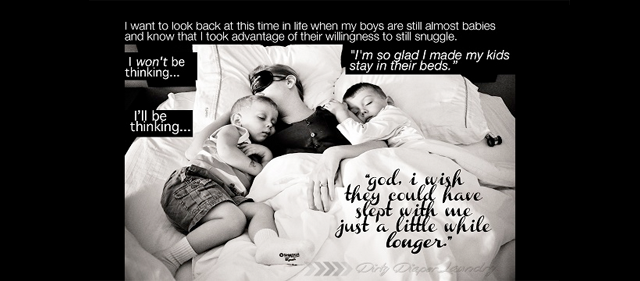I’m watching my daughter sleep. The ends of her mouth curve upwards and gently back again, as if being controlled by a lazy puppeteer. Her dream, this time, appears to be a good one. She is also sprawled out between her father and me, using his chest as a pillow and kicking me repeatedly in the face, which explains why I’m awake at 3:37 in the morning. I’m pretty sure that I will have a black eye to explain to my co-workers. We hadn’t wanted it this way originally. We started off with her in a crib, but I would end up waking frequently, terrified that she was dead and check on her breathing. M is a light sleeper and she would wake up, so no one got any sleep for the first several months of her life. When she joined us in our bed, everyone slept better, but there was constant guilt that I was putting my daughter at risk. After all, information was coming from every direction that co-sleeping is dangerous. But is it really?
The common wisdom is that children should always sleep in their own crib and on their back from birth, in order to decrease the risk of SIDS. It’s a logical one; since many SIDS deaths were originally attributed to suffocation. Decreasing the risk of suffocation should also decrease the risk of SIDS. And yet, many infants still die. A new study from the University of Adelaide was released this week, shedding light on the nature of SIDS. Essentially, babies who die of SIDS are suffocating, but not from external sources such as teddy bears or crib bumpers. Instead, something in their own physiology is causing them to stop breathing. In all of the infants in the study who died from SIDS deaths, there were suffocation markers in their brains. It is now thought that these children likely had an inherited disease, such as sleep apnea, which increased the risk. Hopefully, this will result in more screening.
What this means is that infant deaths from SIDS have nothing to do with unsafe sleeping practices. In fact, there is some indication that for high risk infants, it might be safer for them to sleep in the bed. According to Dr Sears, if the deaths from accidental suffocation are removed from the equation, the risk of SIDS in co-sleeping infants in a safe sleeping environment – no pillows, light blankets, firm mattress and the baby sleeping on their back – actually goes down, as long as the parents do not drink or smoke. There are two reasons for this decline: the first is that parents who co-sleep tend to wake up more quickly if the child stops breathing, since they are right next to the child. The other reason is that the baby tends to sync their breathing with their parent’s breathing, which helps to regulate it. An article in the New York Times outlines the increase in infant deaths attributed to SIDS since 1992, when the Back To Sleep campaign was launched. It does also point out that unsafe sleeping practices with an infant increase the risk of death, but concedes that those are the same whether in a crib or a bed. It’s interesting to note that countries with the highest rates of co-sleeping actually have lower rates of SIDS. In fact, a study that reviewed 20 regions in Europe with high co-sleeping rates found no discernible risk for co-sleeping in families in which the parents did not smoke or drink.
M is awake now and quite adamant that I no longer need a functioning face. She’s progressed from sleepily kicking to crawling on me, using my nose as a support to stand up and jamming her fist in my mouth. We’re planning to move her to her crib soon, but in the meantime, we’ll stop feeling guilty about letting her sleep with us. Maybe all of us will sleep better.


